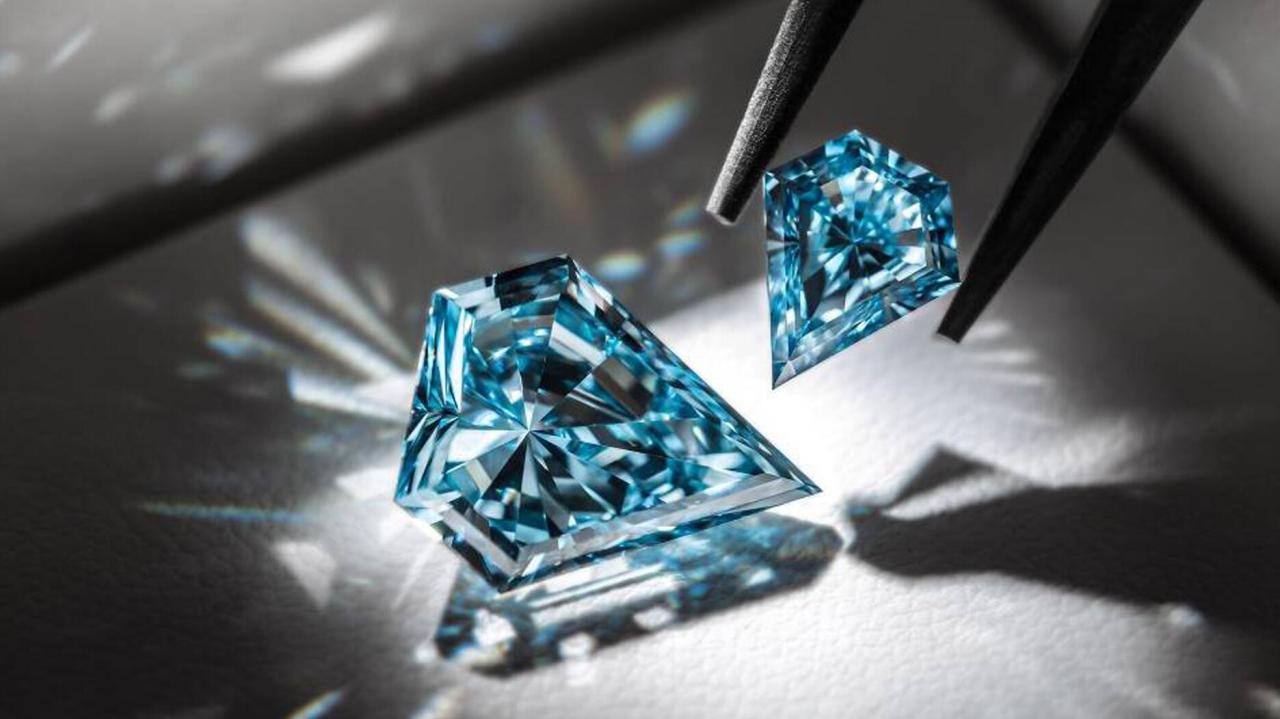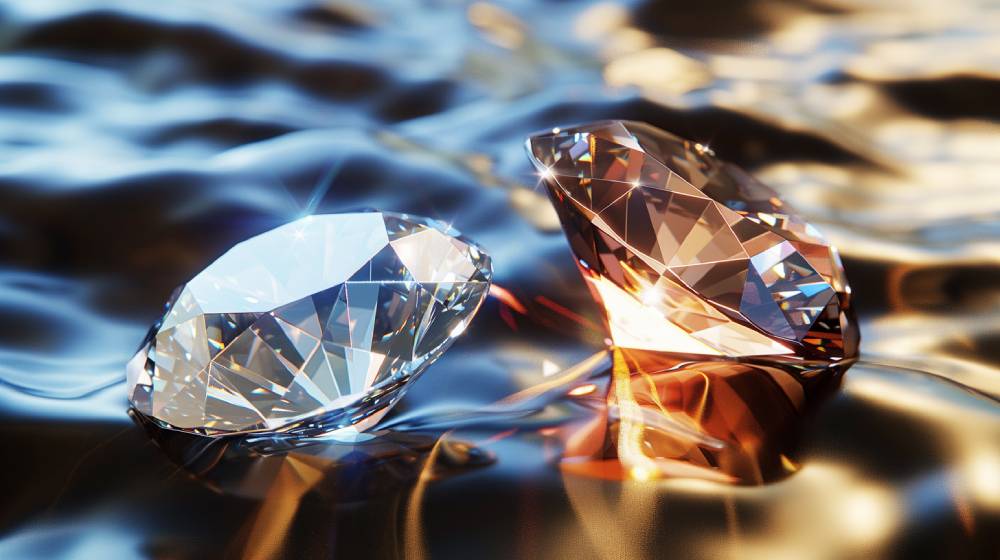The glittering world of fine jewelry is experiencing a seismic shift, one that is fundamentally altering consumer behavior, challenging centuries-old traditions, and redefining the very concept of luxury. At the heart of this revolution is the unprecedented rise of lab-grown diamonds. No longer a niche alternative for the environmentally conscious, these man-made marvels have exploded into the mainstream, captivating a new generation of buyers and sending ripples through the entire industry. This isn’t just a trend; it’s a full-scale boom driven by a powerful convergence of ethics, economics, and cutting-edge science. This article delves deep into the forces propelling the lab-grown diamond jewelry market, exploring its profound implications for consumers, retailers, and the future of adornment itself.
A. Deconstructing the Sparkle: What Exactly Are Lab-Grown Diamonds?
Before understanding the boom, one must understand the product. A lab-grown diamond is not a simulant like cubic zirconia or moissanite. It is a bona fide diamond, possessing the identical chemical composition (pure carbon), crystal structure, and physical and optical properties as a diamond mined from the earth. The key difference lies not in its essence, but in its origin story.
Lab diamonds are created in highly controlled laboratory environments using technological processes that replicate the extreme conditions under which natural diamonds form deep within the Earth’s mantle. There are two primary methods for creating these diamonds:
1. High Pressure-High Temperature (HPHT): This method mimics the natural formation process by subjecting a small diamond seed to immense pressure (over 1.5 million pounds per square inch) and high temperatures (above 2,000 degrees Fahrenheit) in the presence of a carbon source. The carbon melts and forms a diamond around the seed, which is then carefully cooled.
2. Chemical Vapor Deposition (CVD): A more recent and now widely used technique, CVD involves placing a diamond seed in a sealed chamber filled with carbon-rich gas (like methane). The chamber is heated to extremely high temperatures, causing the gas to ionize and break down. The pure carbon atoms then rain down and layer onto the diamond seed, growing a diamond crystal atom by atom.
The result of both processes is a rough diamond that is then cut, polished, and graded by the same renowned gemological institutes (e.g., GIA, IGI) that certify natural stones, using the very same 4Cs criteria: Cut, Color, Clarity, and Carat.
B. The Engine of the Boom: Key Drivers Fueling Market Growth
The lab-grown diamond market is projected to continue its stratospheric growth, and for compelling reasons that resonate strongly with modern consumers.
A. The compelling price-value proposition: This is arguably the most significant driver. Lab-grown diamonds typically cost 60-80% less than their natural counterparts of equivalent size and quality. This dramatic price difference shatters traditional barriers to entry, allowing consumers to purchase significantly larger or higher-quality stones for the same budget. A two-carat, VS clarity, ideal cut lab diamond that is visually flawless can be acquired for the price of a half-carat natural diamond. This accessibility is democratizing luxury and enabling more people to own and gift fine diamond jewelry.
B. The powerful appeal of ethical and sustainable sourcing: Modern consumers, particularly millennials and Gen Z, are increasingly values-driven. They demand transparency and ethical assurance from the brands they support. The lab-grown diamond industry directly addresses the growing concerns associated with traditional mining:
-
Conflict-Free Guarantee: Lab diamonds are unequivocally conflict-free, eliminating the dreaded “blood diamond” association entirely.
-
Environmental Impact: While the production of lab diamonds requires significant energy, numerous independent studies have shown their environmental footprint in terms of land disruption, water usage, carbon emissions, and ecological damage is substantially lower than that of large-scale mining operations. Many producers now use renewable energy to further mitigate their impact.
C. Unmatched consistency and technological advancements: Scientific control allows for a level of consistency that nature cannot guarantee. Labs can produce diamonds with exceptional clarity and color grades more reliably. Furthermore, technology has advanced to the point where producers can create fancy-colored diamonds (like vivid yellows, blues, and pinks) with intense saturation and consistency that are exceptionally rare and prohibitively expensive in nature.
D. A shifting cultural narrative and celebrity influence: The stigma once attached to “synthetic” diamonds has virtually evaporated, replaced by a narrative of smart, conscious consumerism. High-profile celebrities, influencers, and designers have enthusiastically embraced and endorsed lab-grown diamonds, wearing them on red carpets and promoting them as a modern, stylish choice. This celebrity seal of approval has been instrumental in normalizing and glamorizing the category.
C. Navigating the New Landscape: A Consumer’s Guide to Buying Lab-Grown Diamond Jewelry
If you’re considering purchasing, being an informed consumer is key. Here’s what to look for:
A. Always insist on certification. Reputable lab-grown diamonds will come with a grading report from a recognized gemological laboratory such as the International Gemological Institute (IGI) or the Gemological Institute of America (GIA). This report is your guarantee of the diamond’s quality and authenticity, detailing its 4Cs and confirming its lab-grown origin.
B. Understand the 4Cs. Don’t sacrifice on cut quality. A well-cut diamond, whether natural or lab-grown, is responsible for its brilliance, fire, and scintillation. You can often afford a higher grade in color and clarity with a lab-grown diamond, so prioritize an Excellent or Ideal cut for maximum sparkle.
C. Choose a reputable retailer. Purchase from established jewelers, whether online or brick-and-mortar, who specialize in or have a dedicated collection for lab-grown diamonds. They should be transparent about their sourcing, provide detailed product information, and offer robust warranties and return policies.
D. Consider the setting and design. The affordability of the stone allows you to invest in more intricate and high-quality settings. Explore designs in platinum, 18k gold, or recycled gold to further enhance the sustainability aspect of your purchase.
D. Beyond the Hype: Addressing Common Questions and Concerns
With any disruptive innovation, questions arise. Let’s address the most common ones.
A. Do lab-grown diamonds hold their value? This is the most frequent question. The current reality is that lab-grown diamonds do not retain their monetary value in the same way that natural diamonds have historically. Their value is primarily aesthetic and sentimental. As production technology improves and becomes more efficient, the cost of producing them may continue to decrease, which could affect resale value. However, proponents argue that the value proposition is in the initial purchase getting a beautiful, large, high-quality stone for a fraction of the price not as a financial investment.
B. Can a jeweler tell the difference? To the naked eye, absolutely not. Even to a trained jeweler using a standard loupe, a lab-grown diamond is indistinguishable from a natural one. Only with specialized spectroscopic equipment can gemological laboratories detect the subtle differences in crystal growth and trace elements that identify a diamond’s origin.
C. Are they “real” diamonds? Yes, unequivocally. As established, they are optically, chemically, and physically identical. The Federal Trade Commission (FTC) in the U.S. has even expanded its definition of a diamond to include those created in a lab, removing the word “natural” from its guidelines and requiring clear disclosure of origin but affirming their fundamental reality.
E. The Future of Fine Jewelry: Trends and Lasting Implications
The lab-grown diamond boom is not a bubble; it’s a permanent and expanding segment of the jewelry market. Its long-term impact is already taking shape.
A. Market segmentation and co-existence. The market is likely evolving towards a state of segmentation. Natural diamonds will retain their status as rare, geological marvels and heirlooms, often marketed for milestone events and their unique, ancient history. Lab-grown diamonds will dominate the fashion, self-purchase, and “right-hand ring” categories, appealing to those who prioritize design, size, and ethical production. Both can coexist, serving different consumer needs and desires.
B. Innovation in design and customization. The cost-effectiveness of lab-grown stones is unleashing a wave of creativity among designers. Jewelers are no longer constrained by the exorbitant cost of large natural stones, allowing for more bold, dramatic, and innovative statement pieces. Consumers can also more easily afford custom-designed jewelry, specifying their exact desired carat weight and design without compromise.
C. Enhanced focus on sustainability. The competition from the lab-grown sector is pushing the natural diamond industry to become more transparent and accelerate its sustainability initiatives. Major mining companies are increasingly investing in carbon-neutral mining, community development, and traceability technologies to differentiate their product and appeal to conscientious consumers.

Conclusion
The lab-grown diamond jewelry boom is a powerful testament to how technology, ethics, and changing consumer values can converge to disrupt a legacy industry. It represents a move towards a more inclusive, transparent, and conscious form of luxury. For the consumer, it offers unparalleled choice: the timeless, rare narrative of the earth-formed natural diamond, or the brilliant, accessible, and ethically-minded lab-grown alternative. This shift empowers buyers like never before, placing the emphasis not just on the stone’s origin, but on the beauty it holds and the values it represents. The future of jewelry is not just about what sparkles, but why it sparkles.













